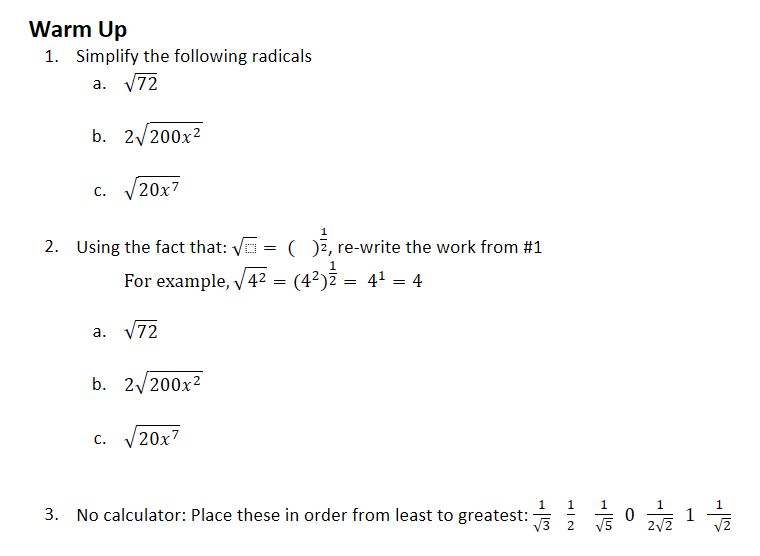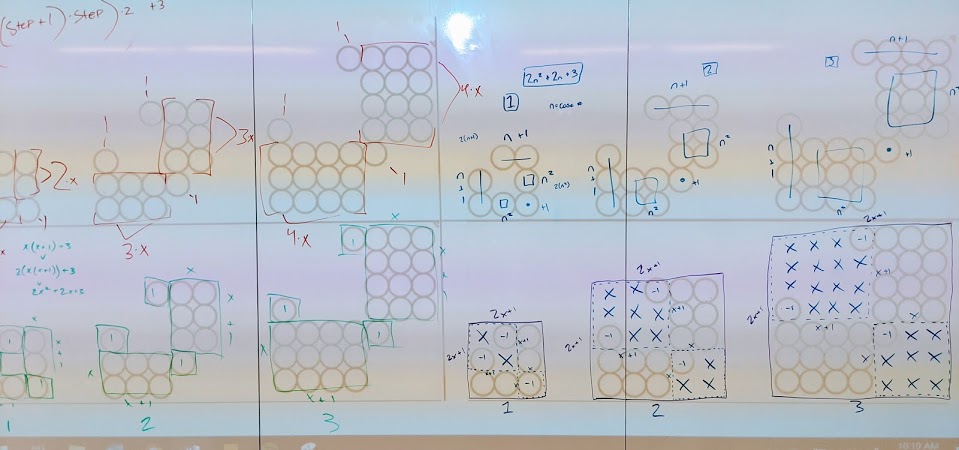(1) considers and addresses each student’s learning profile
(2) designs class activities and assignments that engage and accommodate for both individual students and a diverse group of learners
(3) builds in opportunities for each student to contribute during each class period
(4) provides alternative explanations of course concepts
(5) adapts instruction based on formative assessment
(1) considers and addresses each student’s learning profile
(9/2017-5/2020) Getting student input on this indicator was important to me. Compiling results from the Student Experience Survey on “The thing I would most compliment my teacher on is:” turned out to be both fun and insightful.
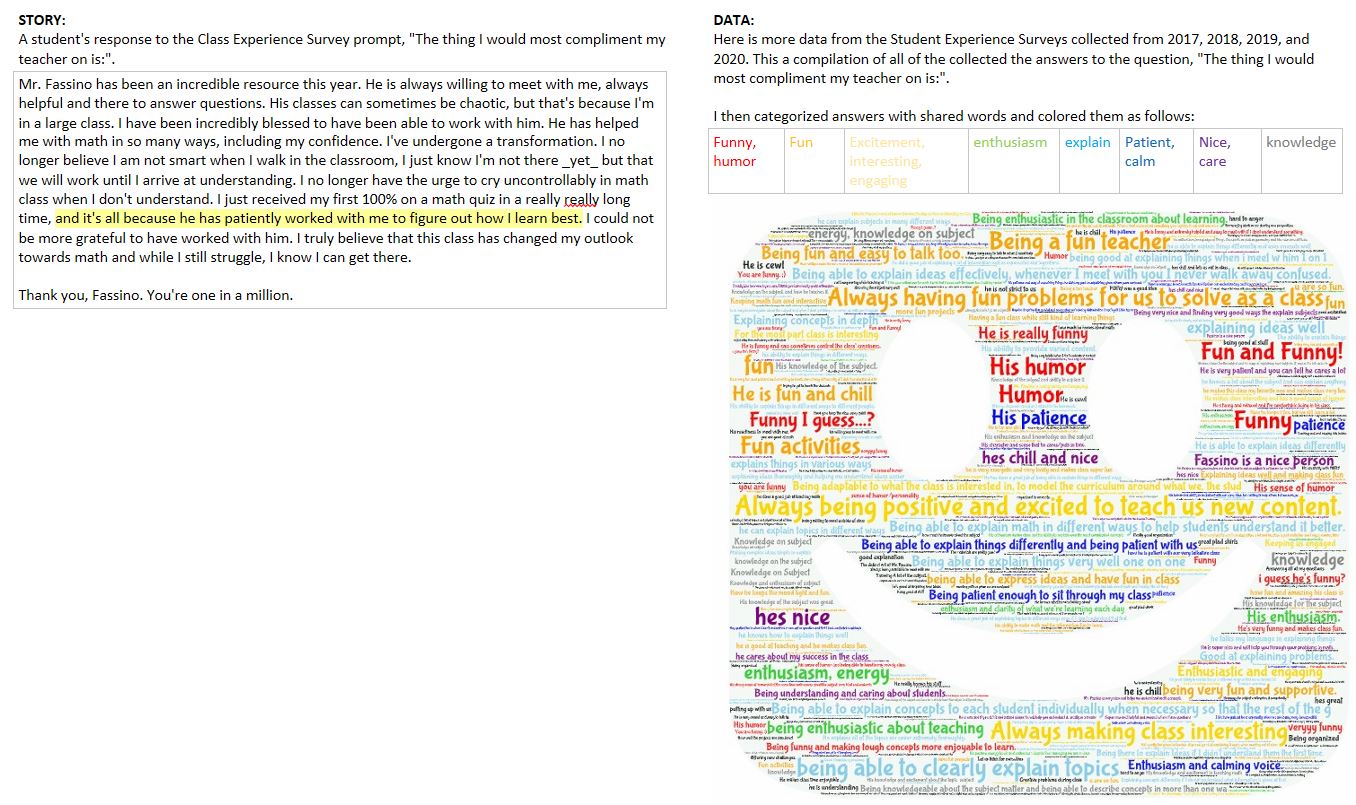
(2) designs class activities and assignments that engage and accommodate for both individual students and a diverse group of learners
(1/2020) Snippet from Algebra 2 lesson: (Day 15) 128 Quadratic Formula Practice. Can see plenty of practice problems available to students and my instructions force collaboration. Additionally, students need a few problems solved correctly to notice patterns and answer the bolded question.
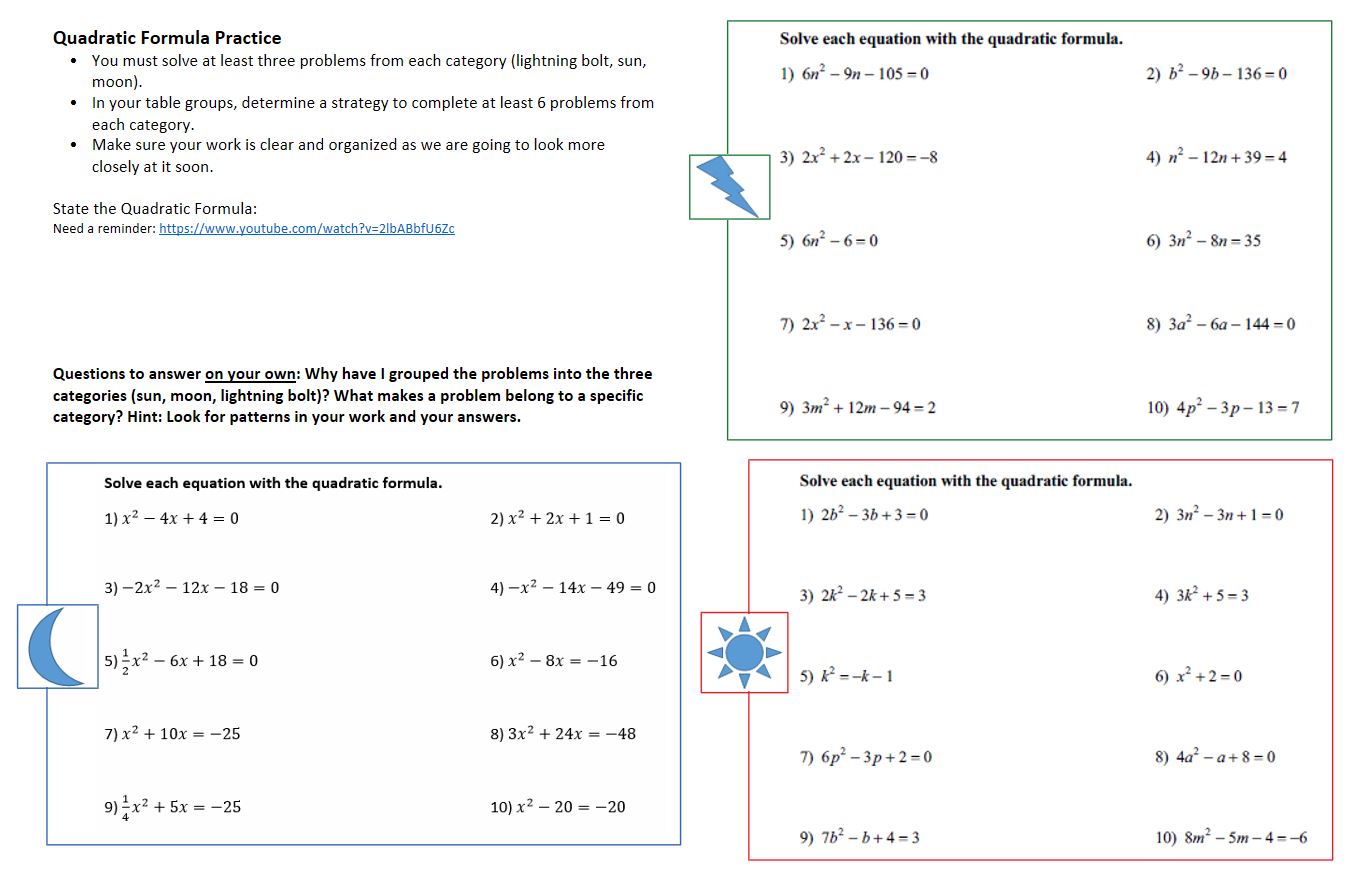
(3) builds in opportunities for each student to contribute during each class period
(2/2020) Snippet of video from the Problem For the Week Presentations in Algebra 2. Every student is given the same problem to solve and about a week to do it. The problems are very easy to pose and have many different and creative solution paths. The problem shown in the video is, “given a circular pizza and the ability to make straight cuts. What is the maximum number of pieces of pizza you can make with 3 cuts, 4 cuts, … n-cuts?”
You’ll see a variety of students presenting, individually or with a partner, and the presentations are ungraded (more detail on this is located in (Classroom Culture #2)). In this video Clare was not originally signed up to present, but because the class suggested earlier to make a pause at “half-time” to allow for more presenters to sign up- Clare decided to sign up then!
(4) provides alternative explanations of course concepts
(9/2019) Negative Exponent Rule discussed at beginning of year in Algebra 2. Snippet from a class’ OneNote Content Library includes photos I took of student work from the whiteboards into the OneNote where the students justified the rule in various ways. Additionally, I’ve board work of a Visual Pattern Problem, where students are tasked to draw how they see the shape growing, predict what the next steps will look like, and determine an equation to predict the number of objects in step x. Multiple representations and explanations are at the core of this classroom activity.
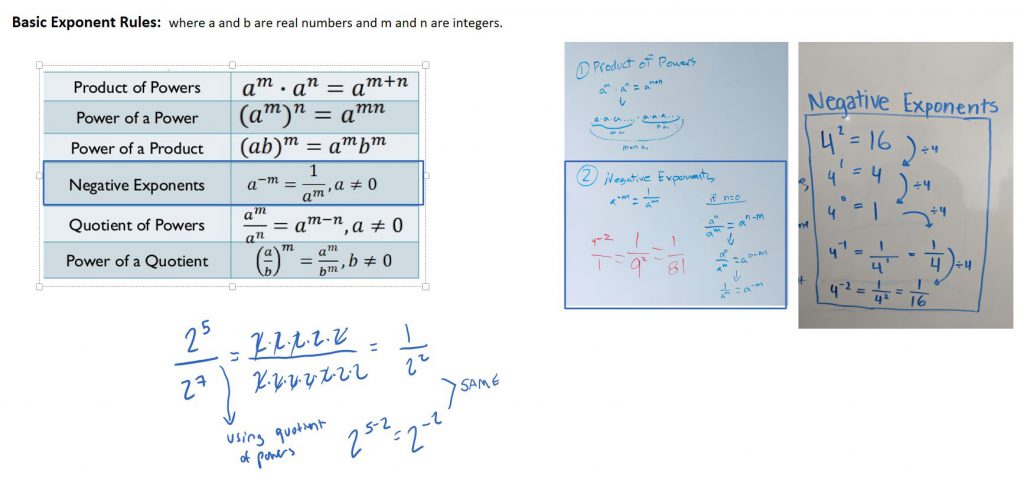
(5) adapts instruction based on formative assessment
(1/2020) Warm Up from an Algebra 2 class: (Day 15) 128 Quadratic Formula Practice.
I chose question 1 as the class before we introduced the skill of simplifying radicals. So that gives me direct insight into how they processed that and handled some of their homework.
Question 2 builds on question 1 but introduces some new notation. So this can help students make connections between skill learned last class and quick preview into an idea that will be discussed later in class. So that helps me gauge how much depth I need to talk about that new idea.
And question 3 just builds general number sense.
How else did this class change based on their warm up performance? The next activity was a Radical Simplifying Kahoot and I had 2 of them ready with different complexities. My C period was ready for the easier Kahoot and my F period class was ready for the more challenging Kahoot.
